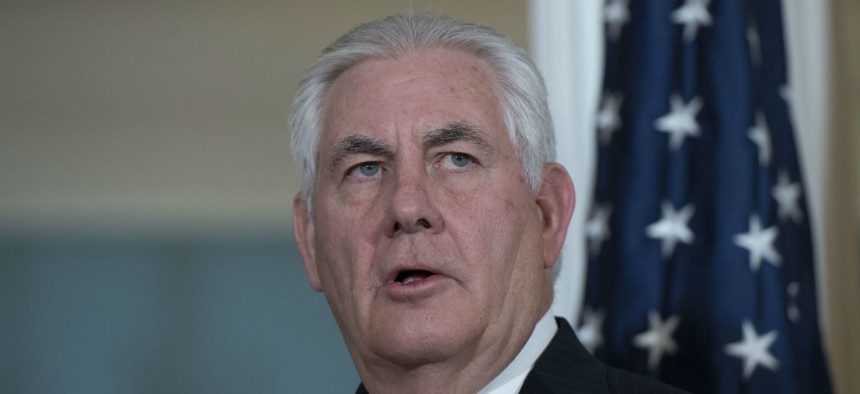State Department Confirms It Is Offering Buyouts to Entice 641 Employees to Leave
Tillerson’s controversial reorganization plan will require an 8 percent cut that cannot be reached through normal attrition.
Citing a need to “reduce unnecessary supervisory levels and organizational layering,” the State Department on Monday confirmed an earlier news report that it is offering staff voluntary buyouts and early retirement incentives.
About 641 employee departures above the normal attrition rate in 2018 will be required under Secretary of State Rex Tillerson’s still-unfolding reorganization plan being created in response to the March Office of Management and Budget memo on reducing the federal workforce. “The department’s goal is to meet its workforce reduction targets through the use of voluntary measures such as buyouts rather than involuntary measures, such as furloughs or reductions in force,” an official said in an email to Government Executive. Both OMB and the Office of Personnel Management approved the buyout offer.
First reported over the weekend by The New York Times, the buyouts follow an array of departures and complaints by some veteran diplomats that Tillerson’s efficiency moves will harm the Foreign Service.
According to the Times, the buyout offers will be worth $25,000 to the first 641 diplomats and staff who commit to leaving by April. With a hiring freeze in effect and with promotions frozen, Tillerson’s long-term goal is an 8 percent cut in the department of 24,520-full-time employees (that doesn’t include 50,000 more locals employed abroad). Reaching the 8 percent goal would require 1,982 employees to leave, but State’s accountants have advised the secretary that only 1,341 are projected to quit or retire ordinarily by his first-round target date of September 2018, leading to the buyout offers.
Reactions in the retired diplomatic community were harsh. “The reduction in the State Department has never been explained or justified by any publicly available logic,” said Amb. Ronald Neumann, who served as U.S. envoy in Afghanistan and now leads the American Academy of Diplomacy.
“On what basis do you need fewer people? One consequence of cutting personnel and aid is that you end up with fewer people managing more money, which almost guarantees poor management,” Neumann added. Such cuts have been tried in the George H.W. Bush and Clinton administration, he noted, resulting in a “hollow” diplomatic service.
The blogger known as Diplopundit speculated that President Trump, who recently said in an interview that he is “not happy” with some people at State, may be inflicting “collective punishment” after having been angered by the dozens of diplomats who signed a dissenting memo criticizing his February travel ban.
Also, Trump’s original budget requesting massive cuts at State was not accepted by Congress, Diplopundit noted. “Despite the reduced request by the Trump administration, Congress reaffirmed its primary role in appropriating funds and gave the State Department more money than was requested,” Diplopundit said.
NEXT STORY: Federal Employee Groups Push for Pay Parity








